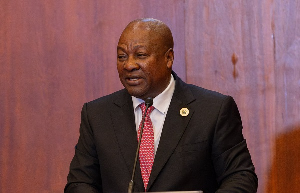The share of total domestic debt held by Ghana’s banking sector has reduced considerably from 50 per cent in 2016 to 35.2 per cent in 2017, the Institute of Statistical, Social and Economic Research (ISSER) has disclosed.
This was contained in the think-tank’s State of the Economy Report 2017 published earlier this month.
According to the Report, however, holdings by the non-bank sector increased marginally from 25.3 per cent in 2016 to 26.3 per cent in 2017.
Instructively, foreign investor holdings increased from 21.7 per cent in 2016 to 38.5 per cent in 2017. ISSER indicated that this was as a result of the active participation of foreign investors in medium-term instruments.
Marketable securities increase
The Report also revealed that marketable debt – which are securities that can easily be converted to cash or securities that are sold or redeemed within a year - constituted the largest portion of domestic debt stock, amounting to 80 per cent in 2017 as compared to 72 per cent in 2016.
However, it is interesting to note that from 2012 to 2016, marketable debt as a portion of domestic debt stock has ranged between 69 per cent and 75 per cent.
Non-marketable securities fall
Non-marketable debt, on the other hand, fell from 24.6 per cent to 19.6 per cent, partly due to the implementation of the zero financing policy of the Budget by the Bank of Ghana and the settling of matured debt.
Also, structured domestic bank loans contributed less than 1 per cent to the total domestic debt.
Debt-to-GDP drops 3%
Meanwhile, Ghana’s debt-to-GDP ratio decreased from 73 per cent in 2016 to 70 per cent in 2017. The ratios of debt service to domestic revenue and to exports were respectively 45 per cent and 25 per cent compared to the debt sustainability threshold of 20 per cent.
ISSER intimated that “This suggests that although there has been some reduction, Ghana is still not out of the woods with respect to debt challenges.”
The Report emphasized that in as much as there is some effort to reduce the public debt, the current situation is still worrying. It suggested two complementary ways to deal with Ghana’s debt problem.
First, the Report noted there is the need to restructure the debt in the way suggested by the debt management strategy. In other words, it said the term structure of the debt needs to be changed from the usual short-term instruments to more long-term instruments.
The second complementary and necessary condition it said is to avoid adding to the stock, particularly from a deficit position.
While the trends in 2017 were positive, the solution ISSER said cannot be a one-off improvement in fiscal outcomes.
These improvements, the Report emphasized need to be sustained in order to achieve the broad goals of the debt management strategy.
Last year, Ghana issued the Energy Sector Levy Act (ESLA) Bond to deal with the Energy Sector levies, a situation that was also targeted at improving the liquidity of banks.
Lead managers of the ESLA Bond got GH¢5.3 billion worth of bids from investors but accepted GH¢4.7 billion as against a target of GH¢6 billion.
Business News of Saturday, 20 October 2018
Source: thefinderonline.com
Banks’ exposure to domestic debt down 15% - ISSER report
Entertainment












